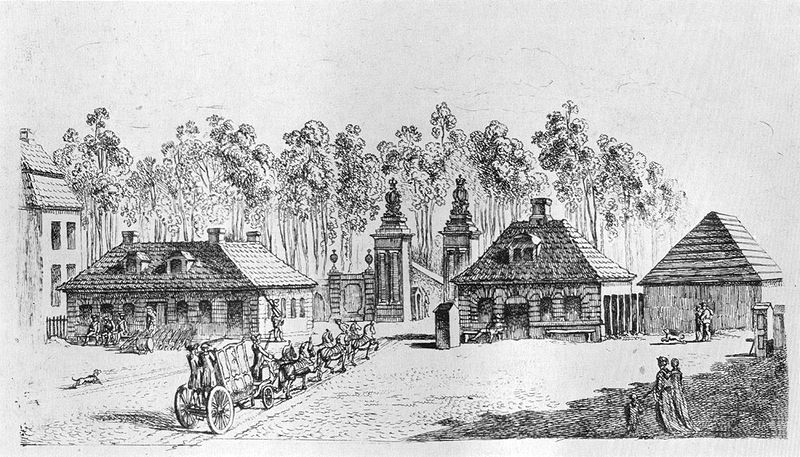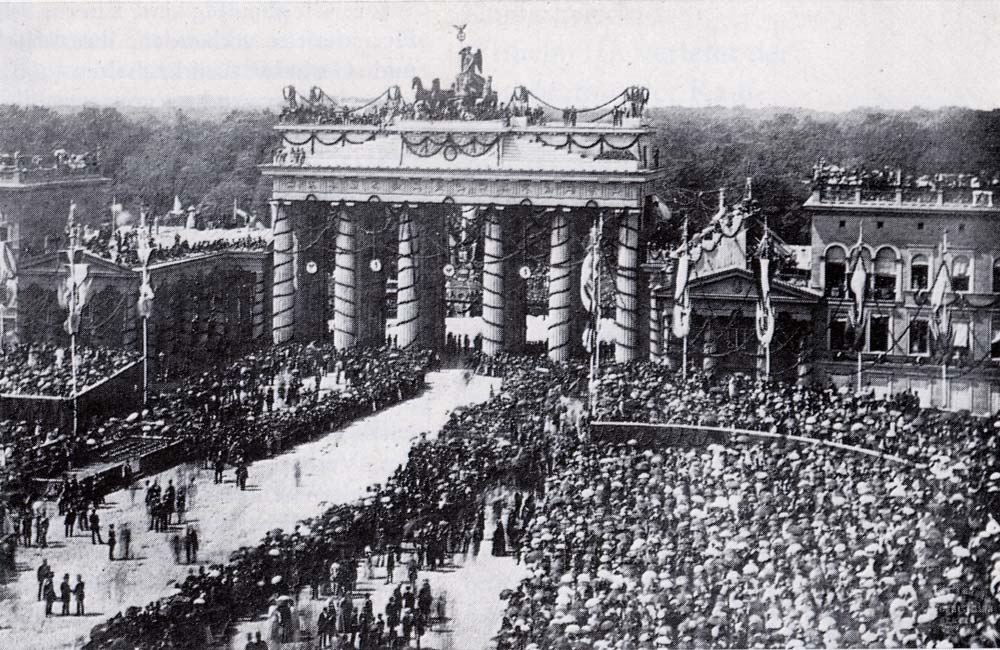21 years ago, in the afternoon of November 9, 1989, Gunter Schabowski announced the opening of all the border crossings between West and East Germany. For this occassion, I have uploaded two new models, both related to this history.
I will start with the Weinhaus Huth.
Located in Alte Potsdamer Straße 5 / Linkstraße 45, the Haus Huth opened in 1912 as home to the wine restaurant and cellar of William Huth, a wine merchant whose second great-grandfather was Wine Cellar Master to Frederick the Great. This building stood in the place of another building, owned by the Willy's father, Friedrich Christian Huth. The new building was constructed with a steel skeleton to resist the wine storage space, which was located in the upper floor. This feature allowed the building to remain almost unscathed 33 years later, after the attack carried by USAF in February 1945. The restaurant was reopened in June of the same year.

During the years of the Berlin Wall, that section of Potsdamer Straße was closed to car traffic - the Wall was at one end and in the other one was the construction site for the Staatsbibliothek. After the German inner border came down, the building was restored. It's now in the center of the Daimler-Chrysler complex.
The second model is, of course, the Brandenburg Gate.
Before 1788, this gate, part of the Berlin excise wall (Gr. Akzisemauer), consisted in two simple guardhouses dating from circa 1735.

The current structure was built between 1788 and 1791 by architect Carl Gotthart Langhans and the Quadriga sculpted by J. G. Schadow. Several events in German history have been related directly to the Gate. Napoleon I of France took the sculpture in 1906 after the Prussian defeat at Jena. The Quadriga was retrieved from Paris in 1914 and the Iron Cross was added, turning it into a symbol of Victory. The Brandenburg Gate was also place for some celebrations during the Franco-Prussian War of 1870-71.
 The Brandenburg Gate was also the beggining of the great Unter den Linden boulevard, that led to the Stadtschloss and city centre.
The Brandenburg Gate was also the beggining of the great Unter den Linden boulevard, that led to the Stadtschloss and city centre.
The Brandenburger Tor was one of the few remaining buildings standing in Pariser Platz after WW2, (the other being the Academy of Fine Arts and the Adlon Hotel). Following the construction of the Berlin Wall, the Gate was used as a border crossing only for West Berliners, opening in August 13, 1961 - although it was closed in the next day. The crossing - the Gate - was reopened in December 1989.
It's now, at the same time, the only remaining building from prewar Parisier Platz, and the only remaining gate from both city walls (Hallesches Tor was destroyed in WW2, the war damaged Potsdamer Tor was demolished in the 1950; part of the Oranienburger Tor can be found outside the Borsig-Werke).
I will start with the Weinhaus Huth.
Located in Alte Potsdamer Straße 5 / Linkstraße 45, the Haus Huth opened in 1912 as home to the wine restaurant and cellar of William Huth, a wine merchant whose second great-grandfather was Wine Cellar Master to Frederick the Great. This building stood in the place of another building, owned by the Willy's father, Friedrich Christian Huth. The new building was constructed with a steel skeleton to resist the wine storage space, which was located in the upper floor. This feature allowed the building to remain almost unscathed 33 years later, after the attack carried by USAF in February 1945. The restaurant was reopened in June of the same year.

During the years of the Berlin Wall, that section of Potsdamer Straße was closed to car traffic - the Wall was at one end and in the other one was the construction site for the Staatsbibliothek. After the German inner border came down, the building was restored. It's now in the center of the Daimler-Chrysler complex.
The second model is, of course, the Brandenburg Gate.
Before 1788, this gate, part of the Berlin excise wall (Gr. Akzisemauer), consisted in two simple guardhouses dating from circa 1735.

The current structure was built between 1788 and 1791 by architect Carl Gotthart Langhans and the Quadriga sculpted by J. G. Schadow. Several events in German history have been related directly to the Gate. Napoleon I of France took the sculpture in 1906 after the Prussian defeat at Jena. The Quadriga was retrieved from Paris in 1914 and the Iron Cross was added, turning it into a symbol of Victory. The Brandenburg Gate was also place for some celebrations during the Franco-Prussian War of 1870-71.
 The Brandenburg Gate was also the beggining of the great Unter den Linden boulevard, that led to the Stadtschloss and city centre.
The Brandenburg Gate was also the beggining of the great Unter den Linden boulevard, that led to the Stadtschloss and city centre.The Brandenburger Tor was one of the few remaining buildings standing in Pariser Platz after WW2, (the other being the Academy of Fine Arts and the Adlon Hotel). Following the construction of the Berlin Wall, the Gate was used as a border crossing only for West Berliners, opening in August 13, 1961 - although it was closed in the next day. The crossing - the Gate - was reopened in December 1989.
It's now, at the same time, the only remaining building from prewar Parisier Platz, and the only remaining gate from both city walls (Hallesches Tor was destroyed in WW2, the war damaged Potsdamer Tor was demolished in the 1950; part of the Oranienburger Tor can be found outside the Borsig-Werke).
Enjoy.


No comments:
Post a Comment